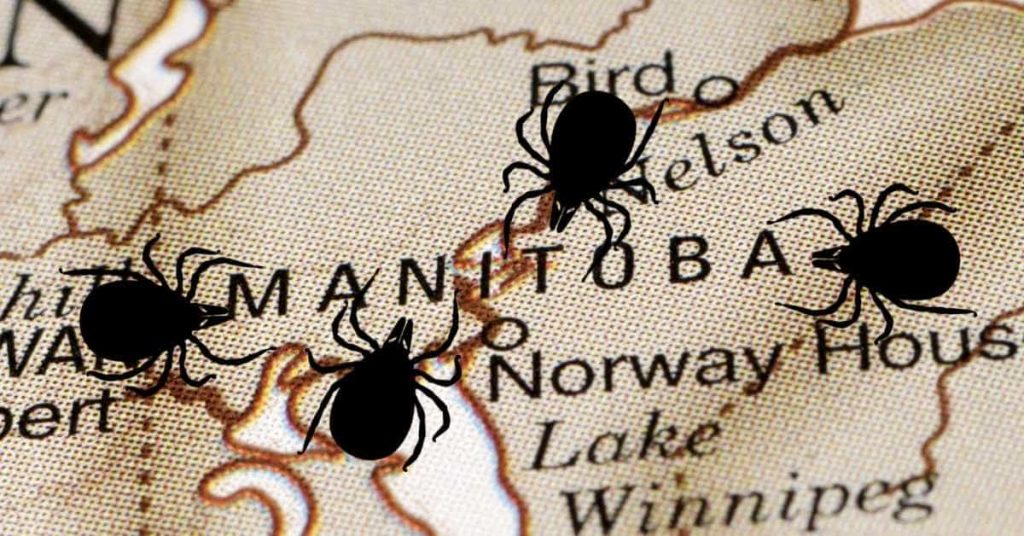
According to studies, the Canadian province of Manitoba is experiencing a rise in tick populations. The number of Lyme disease cases in 2019 has been 64, which is relatively higher than the past year. Experts recommended families in areas of high tick populations have daily tick checks for better management of ticks. Prevention and awareness are the keys to staying safe from tick-borne diseases. This blog is all about the ticks in Manitoba, the types of ticks, and how to keep yourself safe from those ticks.
How Is Manitoba Very Conducive To Ticks?
Ticks require an environment that is shady but warm, and the geographical landscape of Manitoba serves one of the best thriving regions for ticks. Manitoba is gifted with dense forests and semi-temperate climatic conditions, warm in summers and cold in winters.
The grassy lands in the area are helpful for the growth of ticks. Windbreaks on farms also serve as a suitable habitat for these ticks. Rivers such as Red Hayes also make it comfortable for these arachnids to thrive. Climatic conditions also play a vital role in the expansion of ticks in the Manitoba region.
Types of ticks in Manitoba
Blacklegged Tick
The most conducive environment for the blacklegged tick is Southern Manitoba. You can also find blacklegged ticks in other regions, but less than in southern Manitoba. Adult ticks are active from April to November, and the nymphs are active during the late spring and early summer. The life span of the deer tick is 2 years. These ticks are three-host ticks. The adult female is larger than the male, measuring 18 inches.
But after the consumption of blood, they may get bigger. The female adult tick takes 4–5 days to complete a meal.
Blacklegged ticks are vectors of diseases such as:
- Borrelia burgdorferi, which causes Lyme disease.
- B. miyamotoi, which causes a relapsing fever called Borrelia miyamotoi disease (BMD).
- Anaplasma phagocytophilum, which causes anaplasmosis.
- Babesia microti, which causes Babesiosis.
- Alpha-Gal syndrome, a meat allergy.
Long term effects of the Blacklegged tick-borne diseases
- Long-term effects of Lyme disease include myocarditis, short-term memory loss, mood swings, anxiety, heart palpitations, etc.
- Anaplasmosis’s long-term effects include coma, seizures, excess bleeding, or heart failure.
- Babesiosis could relapse. This is within nine months. The parasites in the blood may live for years.
- Alpha gal is not curable but can be managed by following the right diet. A medical practitioner may prescribe emergency medications in case allergic reactions arise.
American Dog Tick:
They belong to the hard tick category like blacklegged tick. They are also known as the wood tick. Their host includes mammals, birds, reptiles, and amphibians. They are most active from April to August.
American dog ticks are dimorphic. The females have scutum on their backs and engorge after a blood meal. Without feeding, these ticks can survive for up to 2 years.
These ticks are brownish and possess white or grey markings on their tops. Both the male and female are flat but oval.
They range from 0.19 inches to 0.59 inches. After a blood meal, the females lay up to 6,500 eggs. But they may eventually die after the process.
Diseases caused by the American dog tick:
- Rocky Mountain Spotted fever (Symptoms may arise from 3 to 12 days after the bite)
- Tularemia. This is caused by a bacterium – Francisella tularensis. The symptoms of this disease arise 3 to 5 days after the bite.
Both of them are dreadful and dangerous to humans. If left untreated, it may cause damage or problems in organs such as the lungs, eyes, heart, bones, or brain.
If symptoms of any tick-borne disease appear, it is critical to visit and seek the assistance of a medical practitioner.
How To Get Rid Of These Ticks?
- Always make sure to look out for ticks. Check your family and yourself for ticks regularly.
- Have a complete knowledge about ticks, their types, tick diseases, and preventive measures.
- Use an insect repellent with a high DEET percentage.
- Permethrin-treated clothing and other items could come in handy.
- Stay away from tick-abundant regions.
What To Do If You Spot A Tick?
Spot a tick and immediately remove it. Spotting a tick can be quite challenging as they secrete enzymes that make their bites painless.
It may take days or never for you to understand that you have had a bite. According to statistics, 70 to 80 percent of Lyme disease patients in the United States do not recall being bitten by a tick.
Identifying ticks is hard but not impossible. You should never use your hand to remove ticks. Instead, you can use a tweezer. Hold the tweezer tight and pluck the tick right away from the bite region. Make sure you do not pluck it hard as the head region would stick to the bite region, making the complete removal difficult.
It is in the government’s interest to post the images of the ticks present in the particular state in the eTick platform.
Conclusion
The number of ticks in Manitoba is rapidly increasing. This means diseases such as Lyme disease could become more prevalent. Manitobans need to be careful and take preventive measures to keep themselves away from tick bites. Due to climate change, the tick-inhibited regions are becoming tick-prone regions. It is best to prevent the ticks from biting. If you assume that you have an infection due to a tick bite in Manitoba, you should immediately consult the doctor.
Referral:


